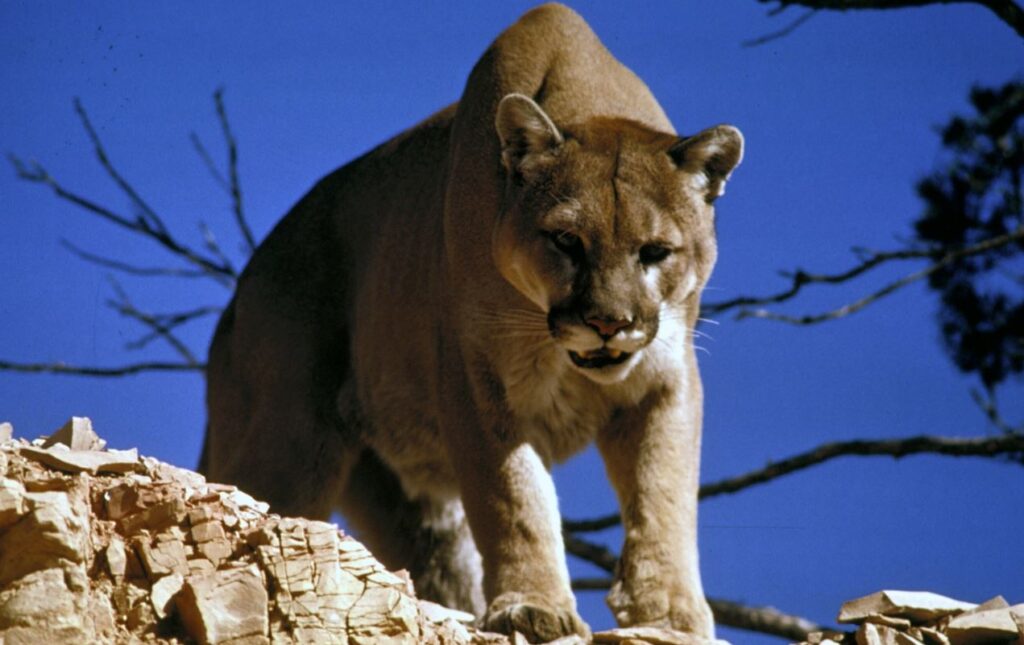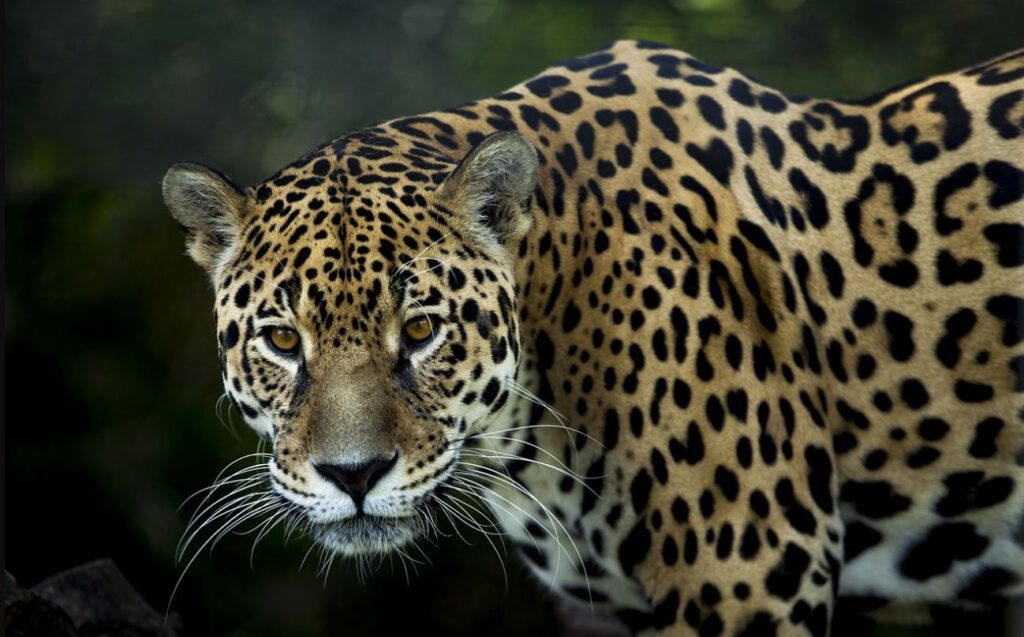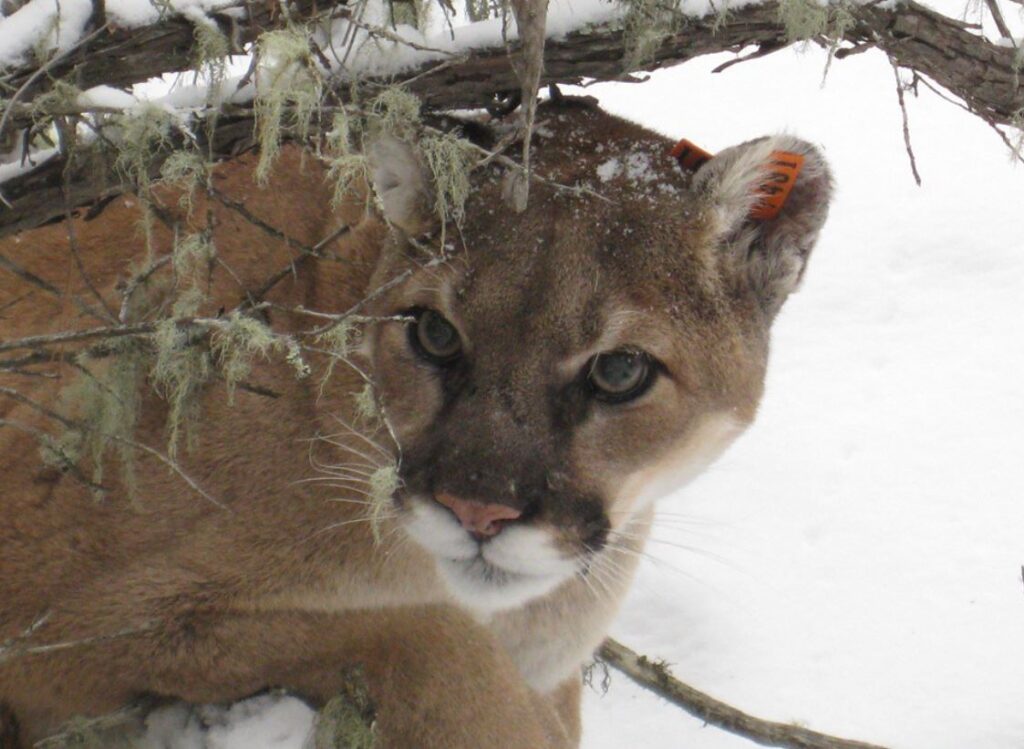If you’re a nature lover, you may have wondered at some point, what is the difference between a cougar and a jaguar? This article will break down the difference between the two big cats and answer some frequently asked questions.
Cougars
The first important thing to know about cougars is that cougar isn’t the only name used to refer to this particular big cat. The scientific name for what we commonly refer to as a cougar is Puma Concolor. It also goes by the names mountain lion, puma, and panther. The cougar holds the record for the most names one mammal has, with 40 names people use. These big cats can be found all across North and South America, spanning from the bottom of Argentina up into Canada. Cougars are thought to have the most significant habitat and distribution range of any wild animal in the Americas.
There are two main subspecies of cougars recognized as valid, P.c. concolor and P.c. cougar. Cougars vary in size, but the average length of male cougars is roughly 7 feet and 10 inches long, measured from the tip of the nose to the tail, and the females average 6 feet 9 inches. On average, males usually weigh about 150 pounds, and females weigh about 121 pounds. These size estimations differ between regions and subspecies, with cougars found in British Colombia being recorded as slightly smaller than their American counterparts.

Cougars have spotless, tawny bronze/silver/red fur with lighter patches along their underbody, chin, and throat. Cougars have no natural predators but will occasionally face off against other predators and scavengers over food. When hunting, cougars are considered ambush predators who drag and hide their kills in bushes and covered areas, feeding on them for days at a time.
Jaguars
Jaguar’s scientific name is Panthera Onca. The jaguars’ distribution area covers much of South America, coming up into the Southern United States. They generally prefer dense, tropical, and deciduous forestry areas due to the cover it offers.
Jaguars’ sizes vary vastly due to differences based on locations and habitats. Jaguars in denser rainforest or forest areas are smaller, whereas those that live in more open spaces tend to grow to larger sizes. This is also partially due to the competition between predators in the area. If the jaguars’ competition is smaller, it doesn’t need to be very big. Jaguar weight can range from 123 lbs-212 lbs, with females tending to be around 10-20% smaller than males. Their length can range from 3ft 8in-6ft 1in, with their tails ranking the shortest of any big cat.

These markings, also called rosettes, are among the main notable felines in the jaguar family. They are differentiated from other big cats in the Americas due to their spots. Jaguars’ spot patterns are all unique and can be used to identify individual jaguars. Some jaguars have a condition called melanism. Melanism causes different animals to have black pigmentation. Jaguars with melanism have black coats of fur with much darker spots that aren’t usually visible to the human eye.
Differences
Differences in Appearance
Cougars are usually measured as smaller than jaguars because they are not built as muscular or powerful as wild jaguars are. This is largely contributed to the difference in habitat between the two species. In contrast, jaguars are bigger and more powerful. Cougars can thrive in a more diverse environment. Another notable difference in appearance between the two is the tawny, solid-colored coat of the cougar versus the golden yellow-spotted, rosette-covered coat of the jaguars.
Differences in Location
Jaguars prefer thick forests, making their populations concentrate in the South Americas more. Cougars are spread quite widely. They were ranging from Canada to Argentina and Chile. They do seem to more heavily populate the upper western United States up into western and central Canada.
Jaguars try to avoid humans when they can, meaning they choose habitat areas with little to no roads, buildings, or residences. Cougars can thrive in most habitat types, including those with little vegetation. This also notes their willingness to traverse human-populated areas. Both species suffer from the effects of human-caused deforestation, urban growth, habitat loss, and fragmentation. Poaching has also been an issue for both species, though legislation passed to help mitigate this detriment, allowing populations to stay steady.
Differences in Diet
Both jaguars and cougars are obligate carnivores, meaning they need fatty proteins and meats to gain energy. Cougars are generalist predators, meaning they will eat just about anything from insects to larger mammals. Cougars seem to have a preference for ungulates (mostly deer).
The average deer consumption and hunting could be attributed to how much deer is available and location. Cougars and jaguars are both ambush hunters, with their physiques lending to specific advantages. Cougars are known to use their powerful back legs to jump, and jaguars are known for having an incredibly strong bite, supposedly being able to crack a tortoise or turtle shell.
Differences in Conservation Status
With the ever-changing climate and deforestation efforts, let’s take a look at the differences between cougars’ and jaguars’ conservation statuses. Cougars are listed as least concerned with a decreasing population. This stable (for now) condition is primarily contributed to the cougars’ large distribution and habitat area.
Jaguars are listed as near threatened with a decreasing population. This is large because jaguars have a much smaller distribution and habitat area than most wild mammals, especially cougars. With their limited habitat options and the increasing deforestation projects, jaguars are being forced into smaller habitat and forest areas. Their ability to adapt to different environments and be generalist hunters has also contributed positively to their stable conservation status.
Differences in Habits
Cougars are often called silent hunters because they lack the proper specialized larynx and hyoid that create vocalizations. Jaguars, however, are known for their loud and ferocious growls and roars.
Young jaguars use different growls, meows, and grunts to communicate with their mothers. Cougars have been found hissing and growling during fights between males. Jaguars, unlike cougars, can roar and growl. Jaguars use vocalization for many different purposes like territory battles, mating purposes, and fights. Cougars lack the larynx area to make any sound, which is why they are often referred to as silent killers.
Jaguars are most active at night and twilight, though some jaguars inhabiting dense forest areas can be active during the daytime.
Cougars prefer to hunt during dusk and dawn hours. Like many other big cats, cougars prefer to avoid water. Jaguars, however, love to swim, and they are known for being quite good swimmers.
Differences in Life Cycle/Reproduction
Sexual maturity is reached at about 2.5 years of age in jaguars and cougars, though they have different gestation periods. Cougars, on average. have a litter every 2-3 years. Litter size can span anywhere from 1-6 cubs, but the average litter size is 2 cubs. Jaguars’ litters are typically observed to be 1 or 2 cubs. The cubs remain with their mother for up to two years before going off on their own.
Differences in Human Attacks
Jaguars are the least likely of the big cats to attack or endanger humans, and most reported cases have been when the jaguar was cornered or attacked. Despite the growing overlap of areas inhabited by humans and cougars, cougar attacks are relatively rare. Most cougar aggression shown to researchers studying cougars is from mothers with cubs. In some places in South America, there are even stories of cougars protecting humans from jaguars.
Frequently Asked Questions
Can a cougar and a jaguar crossbreed?
This question is still has an unknown answer. It is theorized that a cub of these two breeds would look like a pumapard (mix of a puma and a leopard). There have been a few records of captive crossbreeding between jaguars and cougars, but there has been no scientific or photographic evidence to support this claim.
Is a Cougar or Jaguar Bigger?
This question is hard to answer due to the varying sizes of jaguars, but on average, jaguars are considered the bigger and stronger breed.
Are Cougars or Jaguars endangered?
Only the jaguar is considered endangered/approaching endangered, while the cougar population is considered least concerned.

